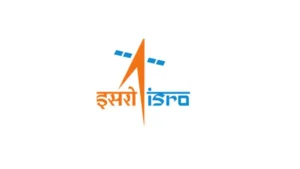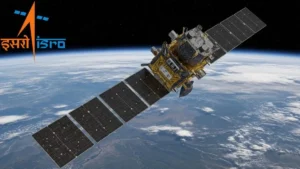NASA’s Europa Clipper spacecraft has embarked on a monumental journey to explore Europa, one of Jupiter’s moons that is believed to harbor a vast subsurface ocean beneath its icy shell. The mission, which launched on October 14, 2024, aboard a SpaceX Falcon Heavy rocket, marks the beginning of an exciting scientific quest to determine whether this distant ocean world could support life.
Key Highlights of the Europa Clipper Mission
Launch Details
- Launch Date : October 14, 2024
- Launch Time : 12:06 p.m. EDT
- Launch Vehicle : SpaceX Falcon Heavy
- Launch Site : NASA’s Kennedy Space Center, Florida
Mission Overview
- Primary Goal : To explore whether Europa’s subsurface ocean has the conditions to support life.
- Distance Traveled : The spacecraft will travel 1.8 billion miles (2.9 billion kilometers) to reach Jupiter and its moon Europa.
- Expected Arrival : April 2030
- Flybys : Europa Clipper will perform 49 close flybys of Europa, coming as close as 16 miles (25 kilometers) to the moon’s surface.
Mission Significance
- This is NASA’s first mission dedicated to studying an ocean world beyond Earth.
- Europa Clipper is the largest spacecraft NASA has ever built for a mission to another planet.
- Equipped with nine science instruments, including ice-penetrating radar, cameras, and thermal sensors, it will study Europa’s icy shell, atmosphere, and ocean interactions.
Key Science Objectives
- Determine the thickness of Europa’s icy crust and its interaction with the ocean beneath.
- Study Europa’s surface and subsurface to identify potential organic compounds and other materials that may indicate the presence of life.
- Investigate Europa’s geology, including its tectonic activity, surface features, and potential water plumes.
Previous Discoveries
- NASA’s Galileo mission in the 1990s provided strong evidence that Europa contains a vast, salty ocean beneath its icy surface, with more water than all of Earth’s oceans combined.
- Scientists believe Europa may also have organic compounds and energy sources that could make it a potential habitat for life.
Power and Technology
Solar Arrays
- Europa Clipper is powered by the largest solar arrays ever used on an interplanetary mission, spanning 100 feet (30.5 meters) from end to end.
- These arrays will provide power to the spacecraft’s instruments despite the faint sunlight that reaches Jupiter.
Gravity Assists
- The spacecraft will leverage gravity assists from Mars and Earth to propel itself toward Jupiter, with flybys of Mars in 2025 and Earth in 2026.
The Journey to Europa
Mission Timeline
- The spacecraft will arrive in Jupiter’s orbit in April 2030 after completing its 1.8 billion-mile journey.
- Europa Clipper will begin its detailed science operations in 2031, performing 49 flybys of Europa over several years.
Communication
- About an hour after launch, the spacecraft successfully separated from the rocket, and communication was established with NASA’s Deep Space Network in Canberra, Australia.
NASA’s Legacy of Jupiter Exploration
Building on Previous Missions
- Europa Clipper’s mission builds upon the legacies of NASA’s Juno, Galileo, and Voyager missions, which have provided valuable insights into Jupiter and its moons.
- The mission will continue NASA’s search for habitable worlds and contribute to the understanding of potential life beyond Earth.
Future Implications
Potential Discovery of Life
- If Europa Clipper finds that Europa has conditions suitable for life, it could suggest that habitable worlds may be more common in our solar system and beyond than previously thought.
- This mission could also lay the groundwork for future missions, including possible landers or probes to further explore Europa’s subsurface ocean.
Team Effort
- More than 4,000 people have contributed to the development and success of the Europa Clipper mission, reflecting years of dedication and collaboration across NASA and its partners.
What is Flyby?
- A flyby is a path a spacecraft follows past a planet or other body in space to get information about it.
- In a flyby, the spacecraft passes close, but isn’t “captured” into an orbit by gravity.
- During a flyby, a spacecraft must use its instruments to observe the target as it passes, changing the aim of the instruments as it passes.
- The spacecraft must downlink data at high rates to Earth, storing data onboard when it can’t send it down.
- A spacecraft in a flyby has a limited opportunity to gather information.
- Once it has flown by its target, it cannot return.
- Flyby operations are planned years in advance of the encounter and refined and practiced in the months prior to the encounter date.
| Summary/Static | Details |
| Why in the news? | NASA’s Europa Clipper spacecraft has embarked on a monumental journey to explore Europa, one of Jupiter’s moons that is believed to harbor a vast subsurface ocean beneath its icy shell. |
| Launch Details | – Launch Date: October 14, 2024
– Launch Vehicle: SpaceX Falcon Heavy – Launch Site: Kennedy Space Center, Florida |
| Mission Overview | – Goal: To explore if Europa’s subsurface ocean could support life
– Distance: 1.8 billion miles (2.9 billion km) – Arrival: April 2030 |
| Mission Significance | – First dedicated mission to study an ocean world beyond Earth
– Largest interplanetary spacecraft built by NASA |
| Key Science Objectives | – Measure Europa’s ice crust thickness
– Study surface for organic compounds – Investigate tectonic activity, surface features, and potential water plumes |
| Previous Discoveries | – Galileo Mission: Found evidence of a vast salty ocean beneath Europa’s icy surface
– Possible organic compounds and energy sources, indicating potential for life |
| Mission Timeline – | – Jupiter Arrival: April 2030
– Science Operations: Begin in 2031 with detailed flybys |
| Communication | Communication established with NASA’s Deep Space Network in Canberra, Australia, after launch |




 ISRO Launches RESPOND Basket 2025, Calls...
ISRO Launches RESPOND Basket 2025, Calls...
 LVM3-M6 Rocket Set to Launch on December...
LVM3-M6 Rocket Set to Launch on December...
 Michaela Benthaus to Make History as Fir...
Michaela Benthaus to Make History as Fir...







